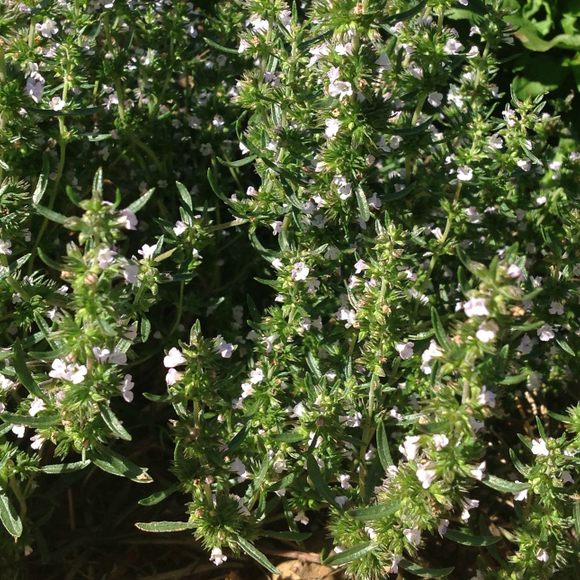Fruits & Vegetables
Acadian Summer Savory
This Canadian variety of a classic Mediterranean herb gives Acadian cuisine its signature fragrance.
The windswept coast of Eastern Canada would seem an unlikely place for a Mediterranean herb. When it was brought to Canada by European colonists, however, summer savory quickly adapted to the climate. In the sun-soaked fields of Provence, the herb was luxuriously weedy, with many lightly fragrant leaves, but in its new home of Acadia, the plant grew sturdier and stubbier, its leaves sparser, but its fragrance more intense. Over the years, its peppery, thyme-like taste became synonymous with Acadian dishes such as fricot (a stew made with potatoes and poultry, fish, or rabbit) and barley or snap bean soup. Today, Eastern Canadians also often use it to season their Thanksgiving turkey stuffing.
Despite its use in classic dishes, there are only a handful of growers in Canada’s Maritime Provinces of Nova Scotia, New Brunswick, and Prince Edward Island that grow the unique Canadian variety. Yet the plant, also known as sarriette d’été Ancienne d’Acadie, has left its indelible fragrance on traditional Acadian cooking, and through the concerted efforts of growers, cultural organizations, and seed banks, it has begun to creep back into Canadian gardens.
In Medieval times, summer savory was beloved by Mediterraneans for its flavor and for what they believed to be its aphrodisiac qualities. Now particularly important in French cooking, it continues to be a vital component of the herbes de Provence seasoning mixture. Its exact path to the Americas is unknown, but the preservation of the Acadian variety’s seeds is thanks to the concerted efforts of generations of family growers. One of the small handful of those still using ancestral seeds is the Robichaud family of New Brunswick, whose ancestor, a farmworker employed by indigenous growers, was gifted sarriette d’été Ancienne d’Acadie seeds. The family passed them down for more than a century, eventually giving seeds to the Atlantic Seed Bank and the Canadian Seed Library.
Today, some growers continue to save Acadian summer savory seeds according to the traditional method: They store the dried plant, which contains seeds, in glass bottles for the winter. By the time a new planting season rolls around, the seeds have fallen to the bottom of the bottle and are ready for sowing anew, in a tradition as hardy and adaptable as the herb itself.
Written By
 Reina Gattuso
Reina Gattuso
Sources
- seeds.ca/d/?t=9c66132600001461
- www.canadianliving.com/food/recipe/chicken-fricot
- www.fondazioneslowfood.com/en/ark-of-taste-slow-food/acadian-summer-savory/
- www.albertcountymuseum.com/news/2017/7/20/summer-savory-the-herb-of-acadie
- books.google.com/books?id=WEPbAwAAQBAJ&pg=PA252&dq=Satureja+hortensis+canada&hl=en&sa=X&ved=0ahUKEwjS8NPeycHiAhWr1lkKHWMtBQgQ6AEIPjAE#v=onepage&q=Satureja%20hortensis%20canada&f=false













